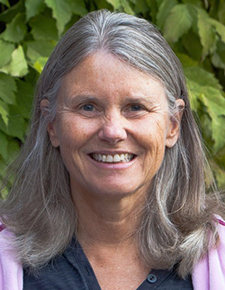U.S. Rep. Pete Stauber has demonstrated yet again that he is wrong for Minnesota’s 8th Congressional District, just as sulfide-ore copper mining is wrong for the headwaters of the Boundary Waters Canoe Area Wilderness.
On May 24, the U.S. House Subcommittee on Energy and Mineral Resources held a hearing on HR 2794, a bill that would permanently protect 234,328 acres of Superior National Forest lands in the headwaters of the Boundary Waters and Voyageurs National Park from sulfide-ore copper mining. Stauber was in attack mode, wrongly accusing three witnesses, including a prominent business owner in his district, of disinformation, misleading statements and half-truths. As a recent Star Tribune editorial observed, the disinformation, misleading statements and half-truths came from Stauber and his Republican allies, not from the witnesses speaking in support of the bill.
The canoe country of northeastern Minnesota is priceless; our state and federal governments have worked to protect this magnificent public land since 1902. The work continues to this day, informed by sound science and unyielding to reckless plans such as that of Antofagasta’s Twin Metals, which wants to mine upstream from the heart of the Boundary Waters. Nearly 70% of Minnesotans support legislation to permanently protect the Boundary Waters from sulfide-ore mining in its watershed. Of Stauber’s constituents, 57% oppose this type of mining in this place because with sulfide-ore copper mining the risks are high, and no risk to the Boundary Waters is acceptable.
Stauber attacks citizens testifying in support of the bill, but it is his favorite Chilean mining company, Antofagasta, that has trouble getting its story straight. Julie Padilla, a representative of Antofagasta and an officer of Twin Metals, testified on May 24 to oppose protecting the Boundary Waters and Voyageurs. In 2019, in response to a Star Tribune writer who asked if Twin Metals could say there was zero risk to the Boundary Waters, Padilla answered “That’s not a fair question.” This past March, Padilla testified at a U.S. Senate Committee hearing and said “everything has a risk.” On May 24, she flipflopped to “there is no risk.”
In fact, the risk is enormous.
Twin Metals cynically claims that its proposed storage technique for toxic tailings dry stacking is perfect and will never leach. At the May 24 hearing, Padilla omitted that in 2018 the dry stacking technique was rejected by the Minnesota Department of Natural Resources for a Polymet mine. The DNR found that in a wet climate such as northern Minnesota, dry stacking has major environmental disadvantages, including the potential to leach heavy metals and other pollutants into surface and ground water. Padilla failed to admit that the two mines in the United States that Twin Metals holds out as perfect examples of dry stacking are failures. An April 2022 report documented that these two mines, together with three others in Alaska, experienced more than 8,000 spills among them. She also failed to inform the subcommittee that the site Twin Metals proposed for storage — on state land — was rejected by the DNR in February 2022 because storage of these toxic tailings on state land “would pose an unacceptable financial risk to the State.”
Padilla testified that a Twin Metals mine won’t leach acid mine drainage. But Padilla failed to tell the subcommittee that the DNR determined that the claim by Twin Metals that its tailings pile would not generate acid mine drainage was unsubstantiated.
Instead of accepting the self-interested statements of a foreign mining company that wants to mine on public land, let’s make decisions based on facts and science. Let’s recognize what is at stake: Minnesota’s greatest natural area, with the cleanest water in America, and a major reason that people live, work and play in Stauber’s district.

The Forest Service is now diligently completing the analysis. More than 270,000 citizens provided new comments. Stauber’s constituents want decisions based on facts and science — and values. Stauber’s derogatory comments and false allegations won’t overcome facts and science. The Forest Service analysis will provide a solid framework for judging HR 2794. Let’s use it.
Becky Rom is the national chair of the Campaign to Save the Boundary Waters and a resident of Ely, Minn.


0 Commentaires